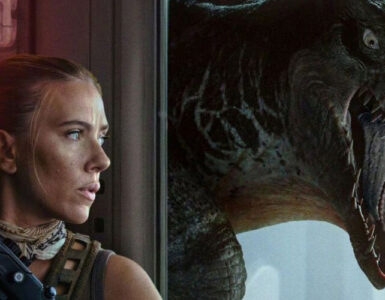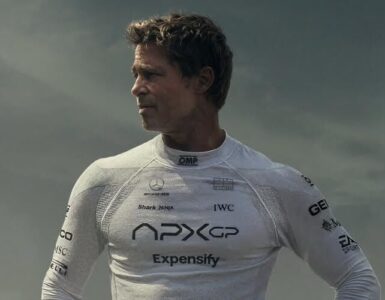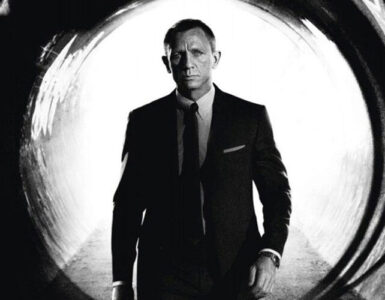This review contains mild spoilers.
Frank Herbert’s Dune has long been a monolith in science fiction literature, painting the stark, sand-swept landscapes of Arrakis, a world where spice trade reigns and the hum of sandworms beneath the surface mirrors the novel’s own rumbling impact on the genre. Despite its monumental status, adaptations have struggled. Visionaries like Alejandro Jodorowsky and David Lynch attempted to encapsulate Herbert’s sprawling universe, with Jodorowsky’s project famously never reaching completion. Meanwhile, Lynch’s 1984 adaptation received a mixed reception, its ambition marred by the constraints of film runtime and the technology of its era.
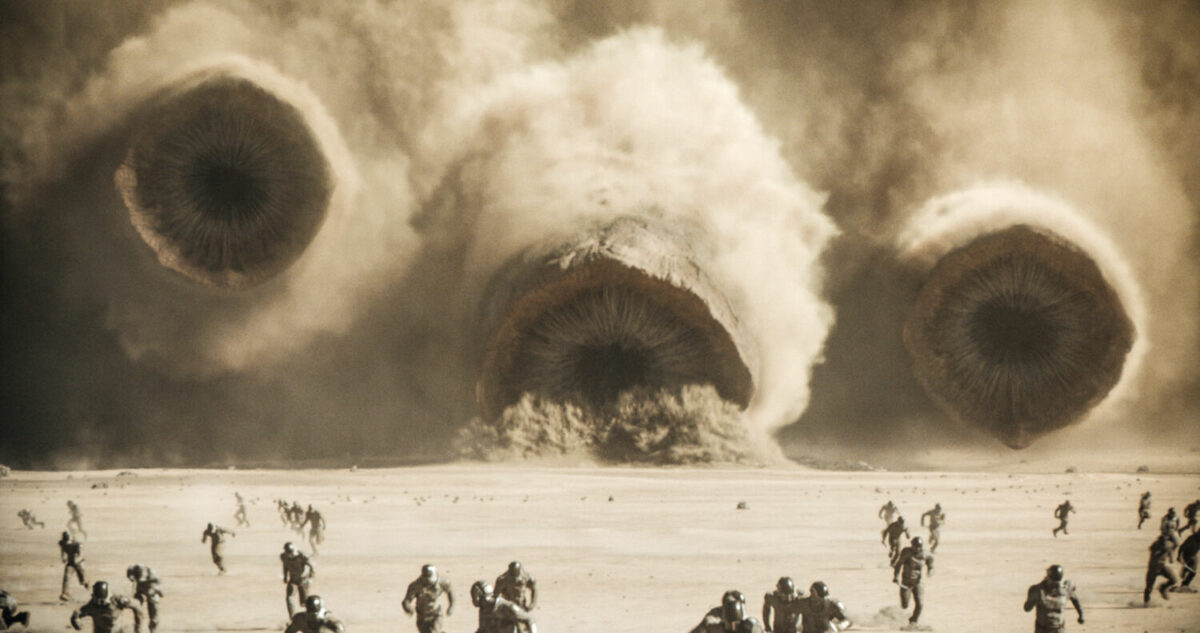
Thus, Denis Villeneuve’s two-part adaptation for Warner Bros. carried with it both excitement and a palpable sense of risk. Yet, Villeneuve’s rendition emerges triumphantly, akin to a sandworm breaking through the desert’s surface, engulfing viewers in its vast, immersive world.
Fret not, for Dune Part Two is Denis Villeneuve’s crowning achievement and sets a new standard for sci-fi epics. His visionary direction creates a gripping narrative, rich with themes of fanaticism and corruption, and captivates with a deeply moving experience. Timothée Chalamet and Zendaya deliver incredible performances, supported by breathtaking set pieces and a stellar cast that transform this blockbuster into a thoughtful exploration of power.
Dune: Part One set the stage on a grand scale, introducing viewers to Duke Leto Atreides (Oscar Isaac) and his family’s tumultuous arrival on Arrakis, only to face betrayal and eventual death by the vengeful Baron Vladimir Harkonnen (Stellan Skarsgård). The narrative meticulously navigates through the expansive lore of Herbert’s universe, allowing the plot to unfold with deliberate grace. Villeneuve’s handling of the material, much like his work on Blade Runner 2049 and Arrival, showcases a reverence for the source material while imprinting his own visual and thematic signatures. The film concludes with the Duke’s son, Paul Atreides, portrayed with a brooding intensity by Timothée Chalamet, and his mother, the shrewd and cunning Lady Jessica (Rebecca Ferguson) finding refuge among the Fremen natives of Arrakis, setting the stage for the saga’s next chapter.
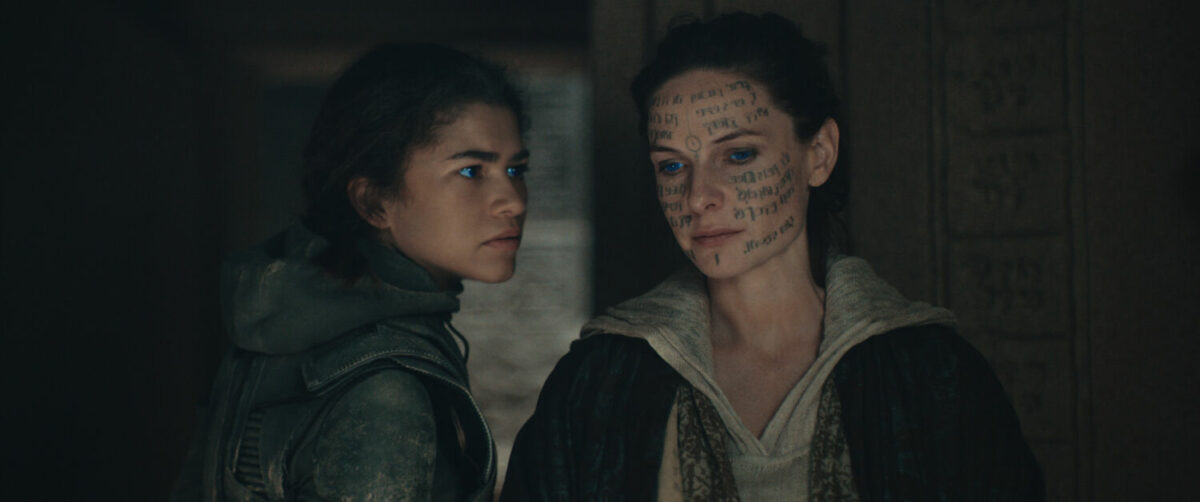
Dune: Part Two picks up the cinematic baton with fervour, diving headlong into the ensuing conflict on Arrakis. This sequel not only expands the scope of its predecessor but also intensifies the emotional and political stakes, weaving a story of ambition, betrayal, and destiny that is both grandiose and intimately personal. Villeneuve’s direction elevates the sequel to a masterpiece of science fiction cinema, balancing breathtaking visuals with profound thematic explorations of power and identity.
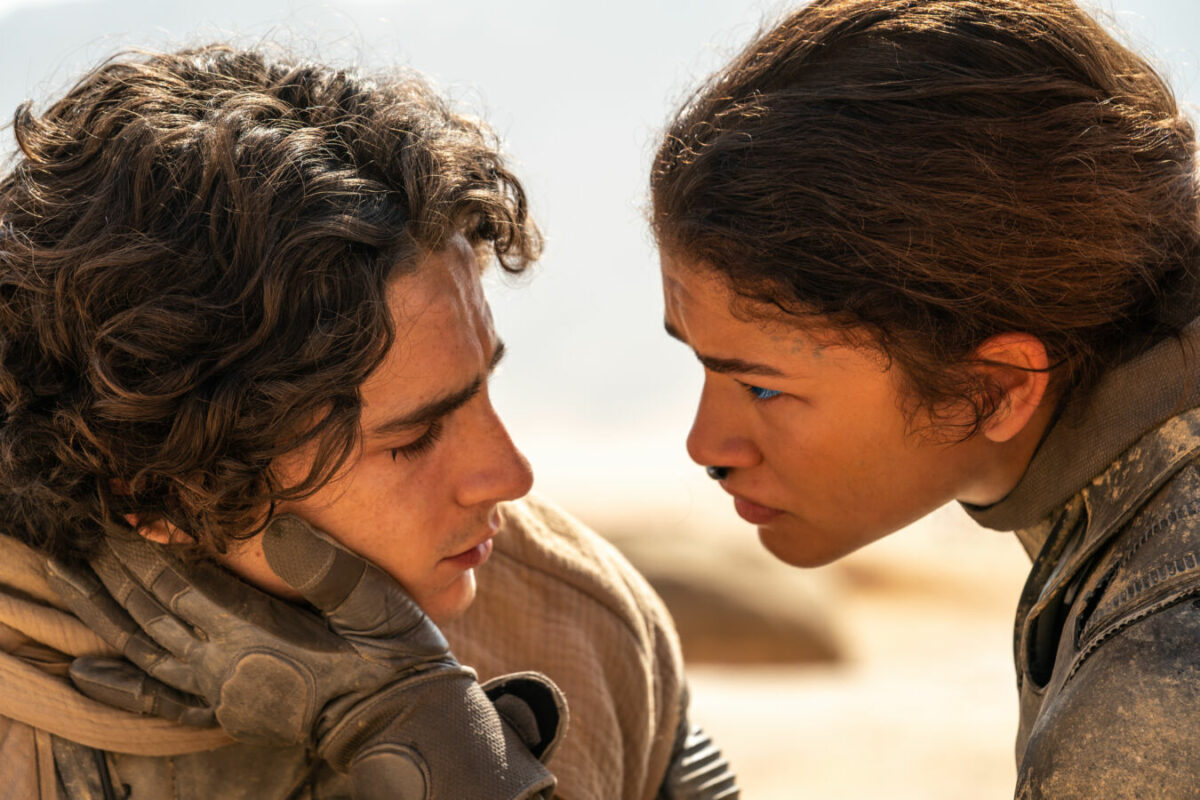
Chalamet and Zendaya, returning as the Fremen warrior Chani, deliver performances that anchor the film’s human core amidst its sprawling epicness. Their on-screen chemistry transcends spoken words, allowing for a profound connection that is felt rather than heard. Zendaya’s Chani emerges as more than Paul’s confidante as she becomes his moral compass amidst the tempest of power struggles, and it is revealed that her destiny is intertwined with Paul’s journey more than she expects. Unlike the novel where their union results in a son, Leto II, the film pivots towards highlighting Chani’s role as an equal partner in Paul’s quest, adding more layers of depth to Zendaya’s portrayal.
Chalamet stands out as the titular character as his portrayal of Paul Atreides captures the duality of a young leader torn between his innate nobility and the intoxicating lure of power. His performance is a testament to his skill, offering a nuanced exploration of Paul’s internal conflict and messianic destiny as the Fremen’s Lisan al Gaib. The command of the screen is undeniable, making Chalamet’s portrayal of Paul not only memorable but deeply impactful.
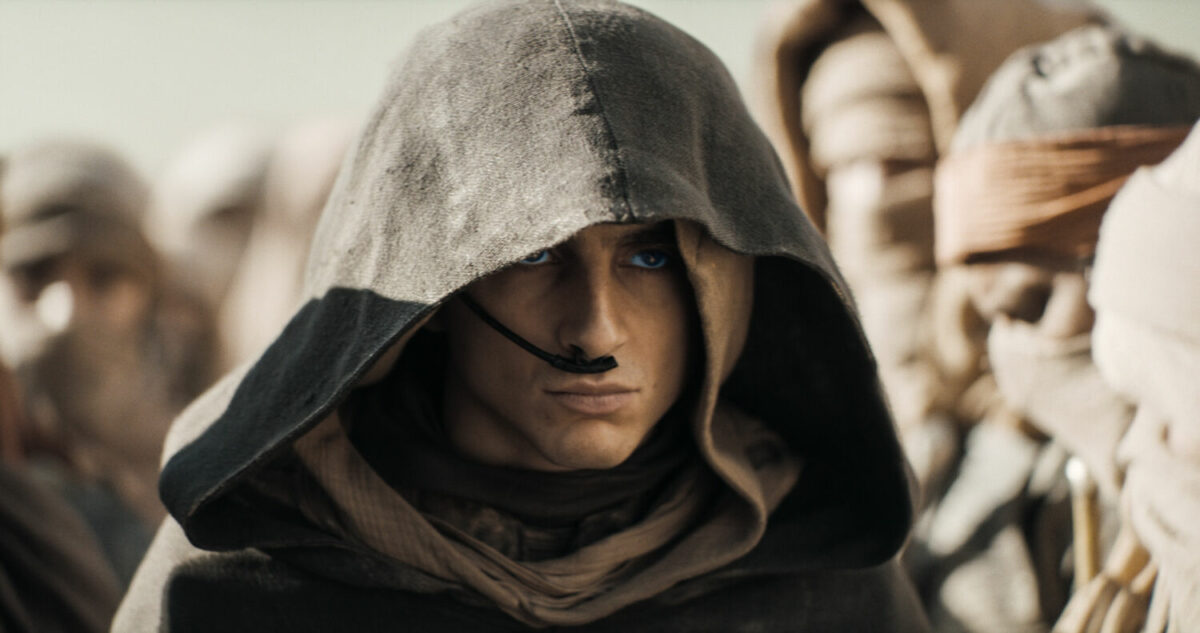
The film unfolds with Paul immersing himself in the Arrakis’ native Fremen culture, under the tutelage of the South Fremen and their leader Stilgar, portrayed with a blend of gravitas and wit by Javier Bardem. Amidst this, a divide emerges; while Stilgar and his followers see Paul as the prophesied off-world saviour Lisan al Gaib, skepticism and hostility brew in other Fremen communities. Caught in this crucible of belief and disbelief, Paul’s quest is not for messianic validation but vengeance against the Harkonnens for their brutal betrayal. Bardem, with his compelling portrayal, underscores the narrative’s caution against blind faith, delivering a performance that resonates with the novel’s themes of fundamentalism.
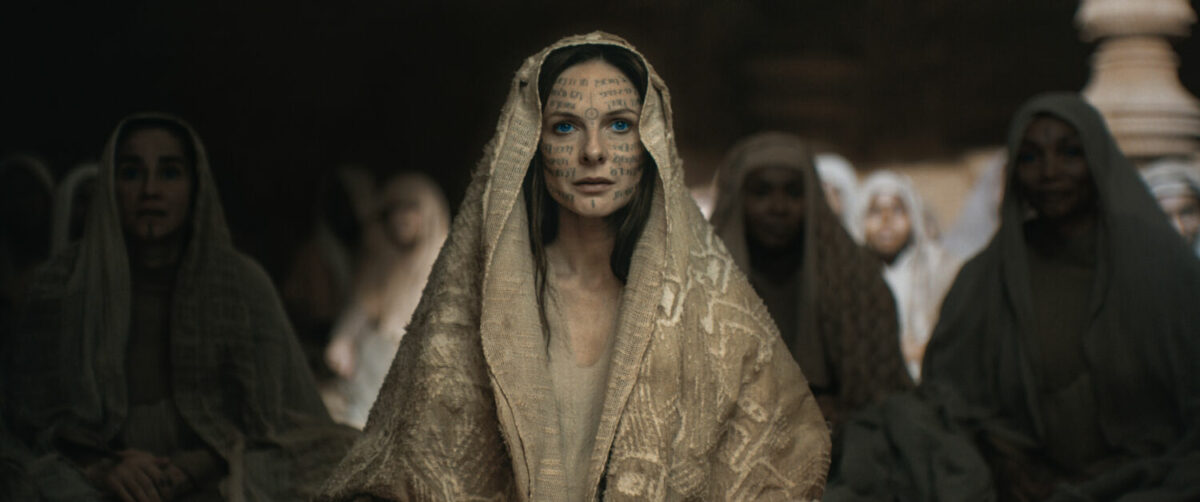
Paul and his mother Jessica (Rebecca Ferguson) integrate into Sietch Tabr, the sacred land where the Fremen community lives, and his journey intertwines with strategic assaults on Harkonnen forces, challenging their spice monopoly. Adopting the Fremen names Usul (meaning ‘strength of the base of the pillar’) and Muad’Dib (meaning ‘desert mouse’ and ‘The One Who Points the Way’), Paul embraces his destiny amidst the desert’s expanse. Jessica’s arc takes a mystical turn as she partakes in the Fremen’s Reverend Mother ritual, consuming the lethal Water of Life. This act inadvertently grants her unborn daughter, Alia (brought to life in Paul’s visions by the surprise casting of Anya Taylor-Joy) extraordinary abilities and introduces a deviation from the original novel where Alia’s birth and role are pivotal.
Villeneuve’s adaptation compresses Paul’s transformation into Fremen life into a matter of months rather than the years Herbert penned, climaxing in a mesmerising sandworm ride that cements Paul’s messianic status. This cinematic spectacle, enhanced by Hans Zimmer’s auditory mastery, demands the immersive expanses of IMAX for full appreciation. The film’s visual narration, particularly in its depiction of the interstellar fights and sandworm riding, and the immersive sound design evoke a sense of cinematic wonder reminiscent of the first viewings of the first Star Wars sequel, The Empire Strikes Back in 1980. Like that seminal work, Dune: Part Two transports audiences to a richly imagined universe, expanding the boundaries of science fiction storytelling. However, the narrative’s pacing, with its swift elevation of Paul to a messianic figure, forgoes the opportunity to explore the depth of his integration into Fremen culture as detailed in Herbert’s work.
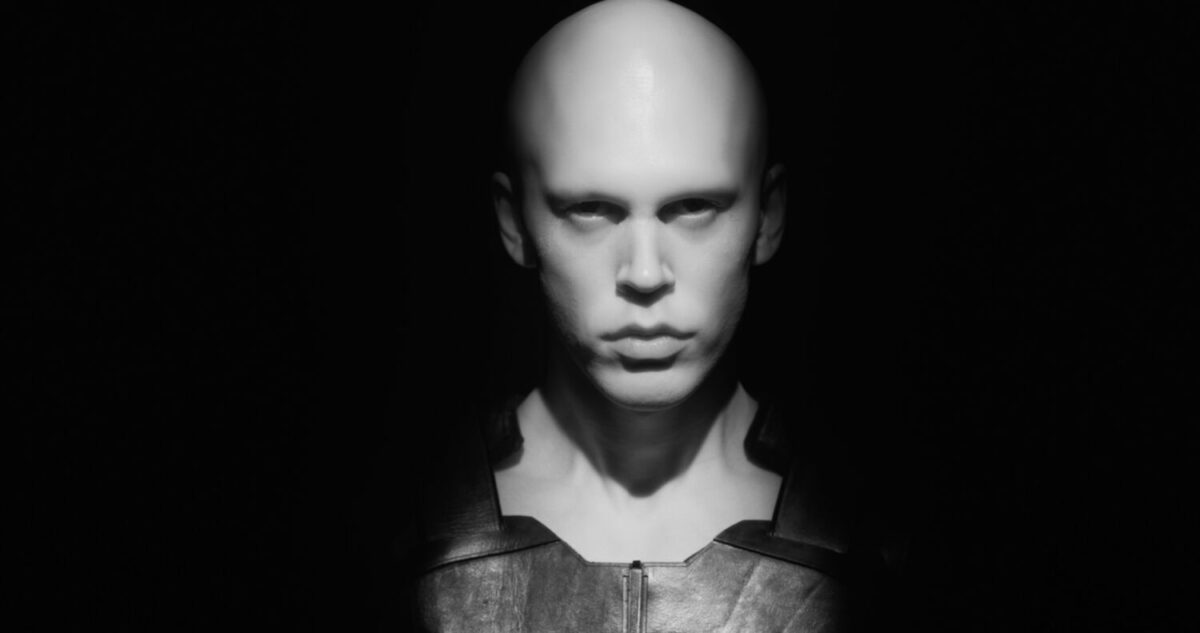
The ensemble cast brings a stellar array of performances, with Oscar nominee Austin Butler of Elvis fame standing out as the deplorably evil Feyd Rautha Harkonnen. His entrance as Feyd Rautha marks a turning point, introducing a new level of villainy to the saga. Butler’s portrayal is chilling, embodying the cold, calculated menace of the Baron’s youngest nephew with a performance that eclipses the brutality shown by Dave Bautista’s Glossu ‘The Beast’ Rabban, the towering enforcer and older nephew of the sadistic Baron Harkonnen in the first installment. Butler’s Feyd Rautha is both captivating and terrifying, presenting a formidable challenge to Paul and the Fremen’s resistance.
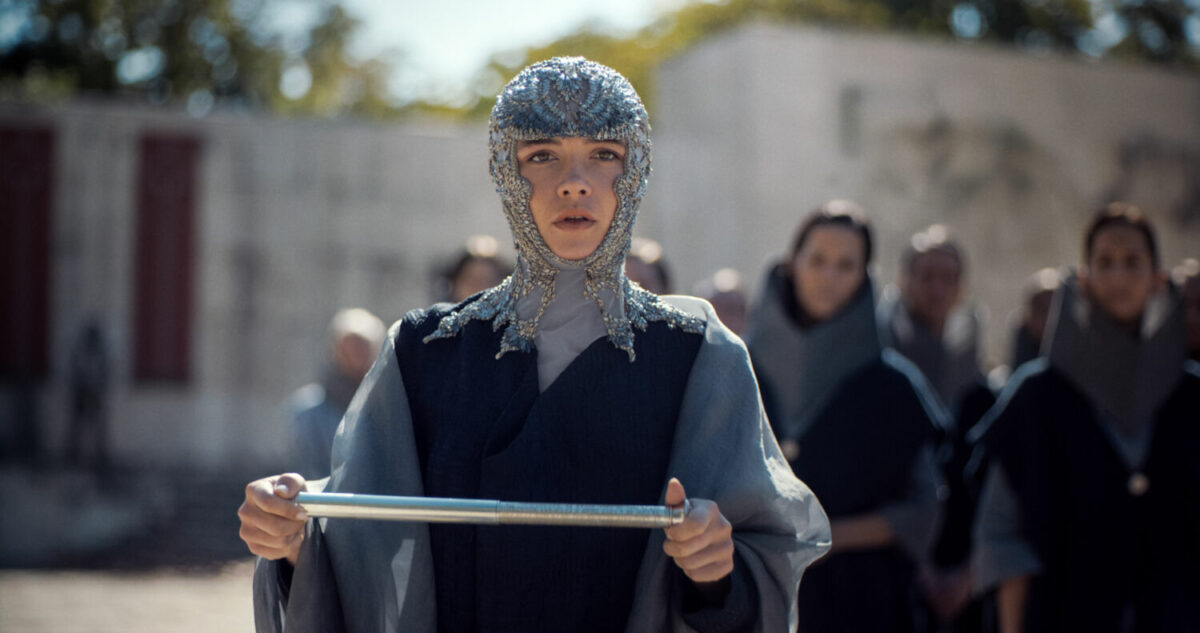
Léa Seydoux as Lady Margot Fenring brings a layer of intrigue and seduction to the narrative. Though the film simplifies her role compared to the novels, Seydoux infuses Margot with a captivating allure and complexity. Her mission, intertwined with her clandestine objectives, adds a layer of political manoeuvring that enriches the plot but will leave audiences wanting more than what was shown. Florence Pugh’s portrayal of Princess Irulan adds another dimension to the ensemble, delivering a performance that leaves a lasting impression despite limited screen time. Pugh’s Irulan is portrayed as a figure of quiet strength and independence, promising more layers to be explored in the third film.
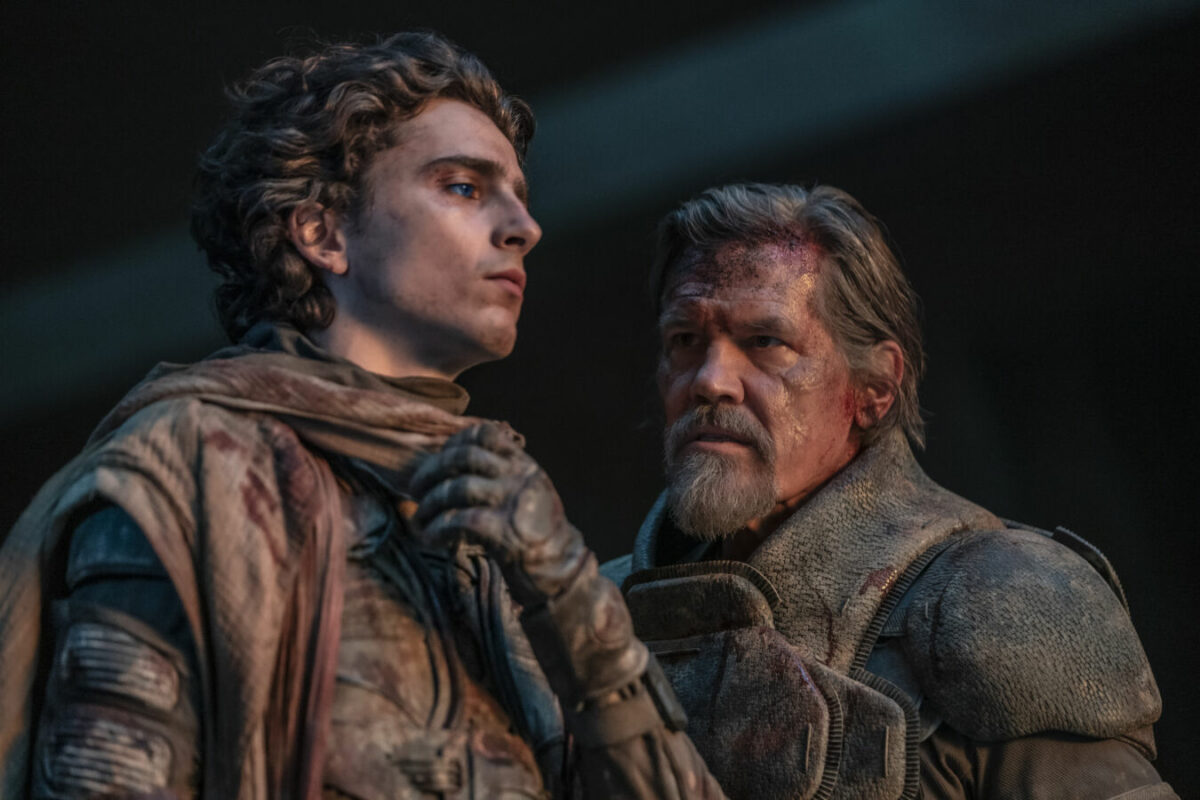
Josh Brolin’s Gurney Halleck, a Warmaster in service of Duke Leto in the first film who is now surviving as a smuggler, makes a memorable return, reuniting with Paul in unexpected circumstances. The movie also diverges from the book in its depiction of Paul’s interaction with the Water of Life, opting for a vision-led narrative shift rather than the book’s more complex circumstances involving Gurney’s misunderstanding about Jessica. While this alteration from the source material might divide book enthusiasts, it serves the film’s streamlined narrative, focusing on Paul’s burgeoning prescience and leadership.
The sequel also elevates its combat sequences far beyond the scope of its predecessor, shifting from intricate world-building to breathtaking action. The narrative’s pinnacle, marked by a large-scale attack on the Emperor’s troops and a meticulously choreographed duel between Paul and Feyd Rautha, symbolises this narrative evolution. This duel, replete with strategic depth and raw courage, sees Paul prevailing despite the treacherous advantage Feyd seeks with the Emperor’s blade. However, the swift demise of certain characters, particularly Rabban’s, leaves a thirst for a more drawn-out confrontation, hinting at missed opportunities for deeper character exploration in their final moments.
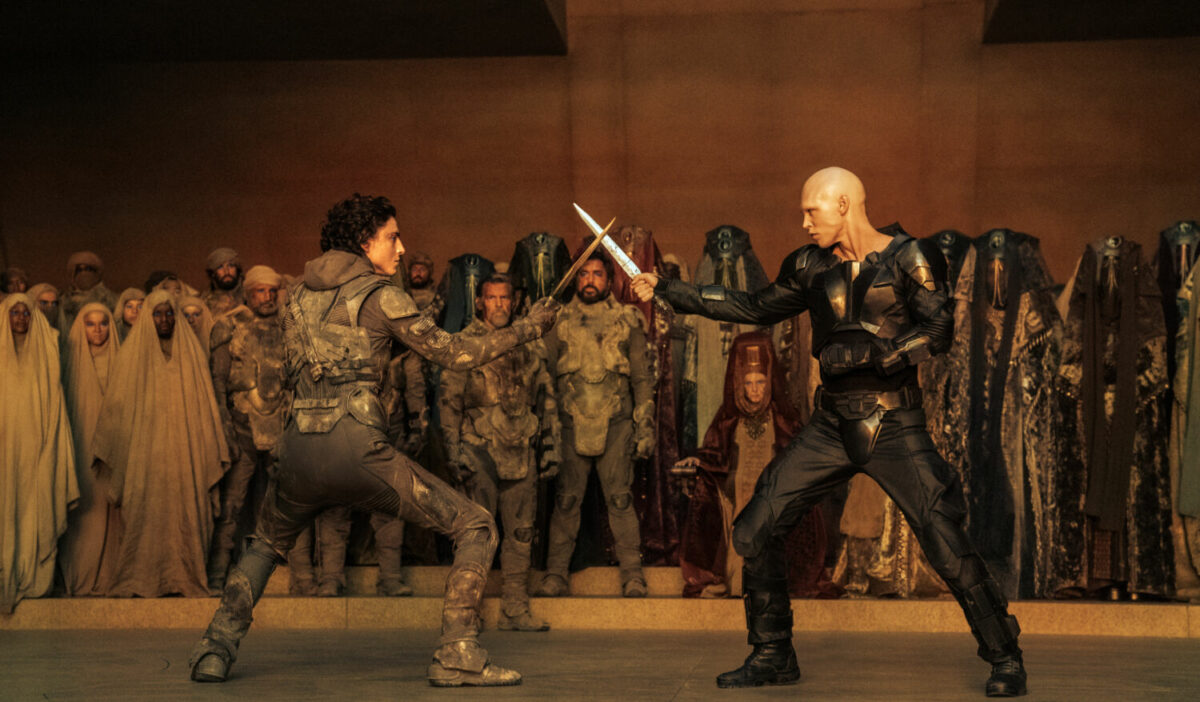
Under the visionary direction of Villeneuve, Dune: Part Two is sculpted into a blend of grandiose science fiction and intimate character study. The finale, leaving audiences in suspense, adheres faithfully to the novel’s vision, teasing the imminent turmoil of a universe on the brink of war and setting the stage for a complex political and spiritual upheaval.
As the curtains close on this chapter, Denis Villeneuve’s revelation that Dune: Messiah could round out this epic narrative, despite the wealth of source material remaining, signals an ambitious vision for concluding the Atreides saga with the gravity and scope it demands. With Dune: Part Two, Villeneuve not only reaffirms his status as a maestro of modern cinema but also sets a new benchmark for science fiction epics, marrying spectacle with profound thematic exploration in a way that resonates deeply with both die-hard fans and newcomers to Herbert’s universe that is as vast and sprawling as the dunes of Arrakis itself.
GEEK REVIEW SCORE
Summary
Dune: Part Two is a visually stunning and action-packed epic that expands on its predecessor’s world-building while exploring themes of power, betrayal, and destiny, but sacrifices some depth for pacing and deviates from the source material at times.
Overall
9.1/10
-
Story - 9/10
9/10
-
Direction - 9.5/10
9.5/10
-
Characterisation - 9/10
9/10
-
Geek Satisfaction - 9/10
9/10



